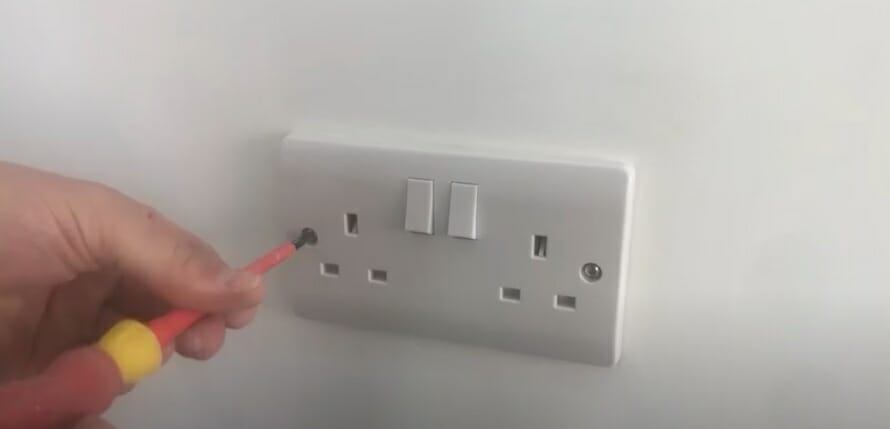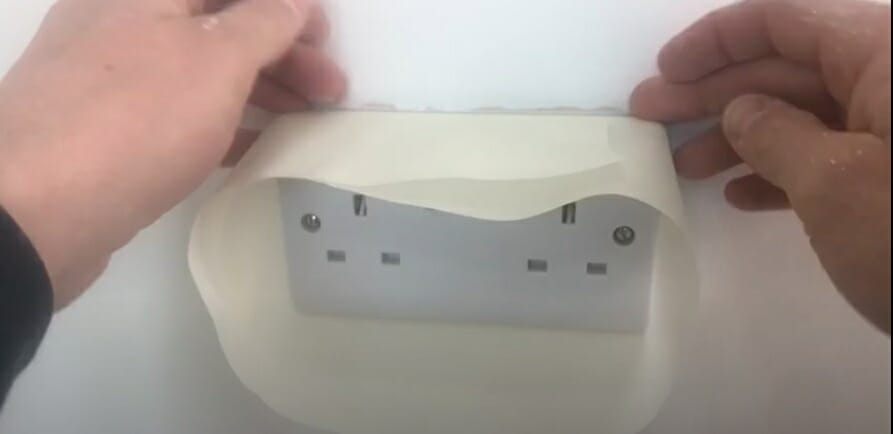Is It Against Code to Paint Electrical Outlets? (NEC – National Electric Code)

You may be wondering if painting electrical outlets is against the law. The answer is not always obvious; I will cover rules and homeowner association issues.
An electrical code (an official set of instructions) specifies the installation procedures for various electrical system components. The National Electrical Code (NEC) is a model code that offers guidelines for local communities to establish their residential codes. Being a veteran electrician, I am very familiar with the NEC, and I will explain if you can paint electrical outlets and where—if so. Knowing the working of the NEC is critical, and you can avoid unnecessary fines due to irregularities.
Quick Summary: According to the National Electric Code (NEC), users should not utilize foreign materials to contaminate or destroy the internal parts of electrical components such as wire terminals, busbars, insulators, and other akin parts. Because it is explicitly indicated in the code, you will violate the code if you paint your outlet.
Is it Illegal to Paint Electrical Outlets?
Keep Paint Off The Receptacles
According to the National Electric Code (NEC), users should not use foreign materials to contaminate or destroy the internal parts of electrical components like wire terminals, busbars, insulators, or other elements.
Because it is explicitly indicated in the code, the code will be violated if you do not follow and paint your outlet.
You Can Paint The External Components – Not The Receptacle
Painting the front of a plastic receptacle is very different from painting the surface of the insulation. Will latex paint harm insulation over time? Will oil-based paint harm insulation over time? What type of approved paint is required?

Why You Shouldn’t Paint Your Electrical Outlets
Plausible Reasons You Should Not Paint Your Electrical Outlets:
1. Outlets May Become Harmed
Here’s why painting the outlet increases the likelihood that your outlet will be damaged.
You certainly use the outlet almost daily, right? The dried paint can clog the outlets’ openings if you paint the outlet. And as a result, you might even tend to force the plugs into the outlets.
If an outlet has been painted fairly frequently previously, layers of paint may have built up. In turn, this may cause the outlet to become blocked, making it practically impossible for you to use it.
Additionally, whenever you need to paint the outlet, you would need to turn off the power to reduce the chance of a short circuit, which could be a hassle.
2. Short-circuit and Fire Hazard Risks
Dried paint may act as a conductor. Therefore, painting the outlets will increase the possibility of electrical short-circuits or fire hazards.
Additionally, the paint can enter an outlet and lead to a bad electrical connection between the device you have plugged in.
3. Having Trouble Performing Maintenance
The electrical systems in our homes require maintenance just like any other system does.
If there is any electrical issue or the wiring needs to be checked, you will need to substitute the outlet. However, trying to take the cover off the wall would result in paint damage.
4. The Painted Outlet Isn’t Quite Appealing
If you believe painting the outlets will make them visually disappear and blend into the background wall, you are mistaken.
The outlets can’t adequately absorb paint as drywalls would. And as a result, you might discover that your painted outlet is more visible, uneven, and splotchy than you initially anticipated.
RULES
Some of NEC Stipulations on Electrical Components
GFCI Protection Manual
According to the electrical code, certain areas of the home must have GFCI (ground-fault interrupter) protection for outlet receptacles, including:
- Kitchen countertops with containers
- Dishwasher-powered outlets
- Bathroom containers
- Containers in the laundry rooms
- Unfinished basement containers
- Garage and other easily accessible outdoor storage containers
- containers close to spas, swimming pools, and other water features
GFCI protection aims to reduce the risk of shock when ground faults occur. It can be applied in one of two ways: either with GFCI receptacles, which are specifically made to provide GFCI protection to a single outlet, or to that outlet as well as “down-stream” outlets that are connected to the same circuit or by using special GFCI circuit breakers that safeguard the entire circuit.
With each iteration of the NEC, the requirements for GFCI protection have progressively increased, and they might do so again in the future.
AFCI Protection
All 15-amp and 20-amp outlets in common living areas must comply with a different type of protection mandated by the NEC — as of January 1, 2014. For these outlets, AFCI (arc-fault circuit-interrupter) protection is required by this requirement.
When an arc fault—a brief sparking between two cables or a connection between two wires—occurs, AFCI protection attempts to detect and shut down the circuit. Due to this sparking, the likelihood of fire is decreased by AFCI protection.
Take a look at some of our related articles below.
- How to test an electrical outlet with a multimeter
- How to test GFCI outlet with multimeter
- Do electrical fires smell like fish
Video References
Mr Builder
